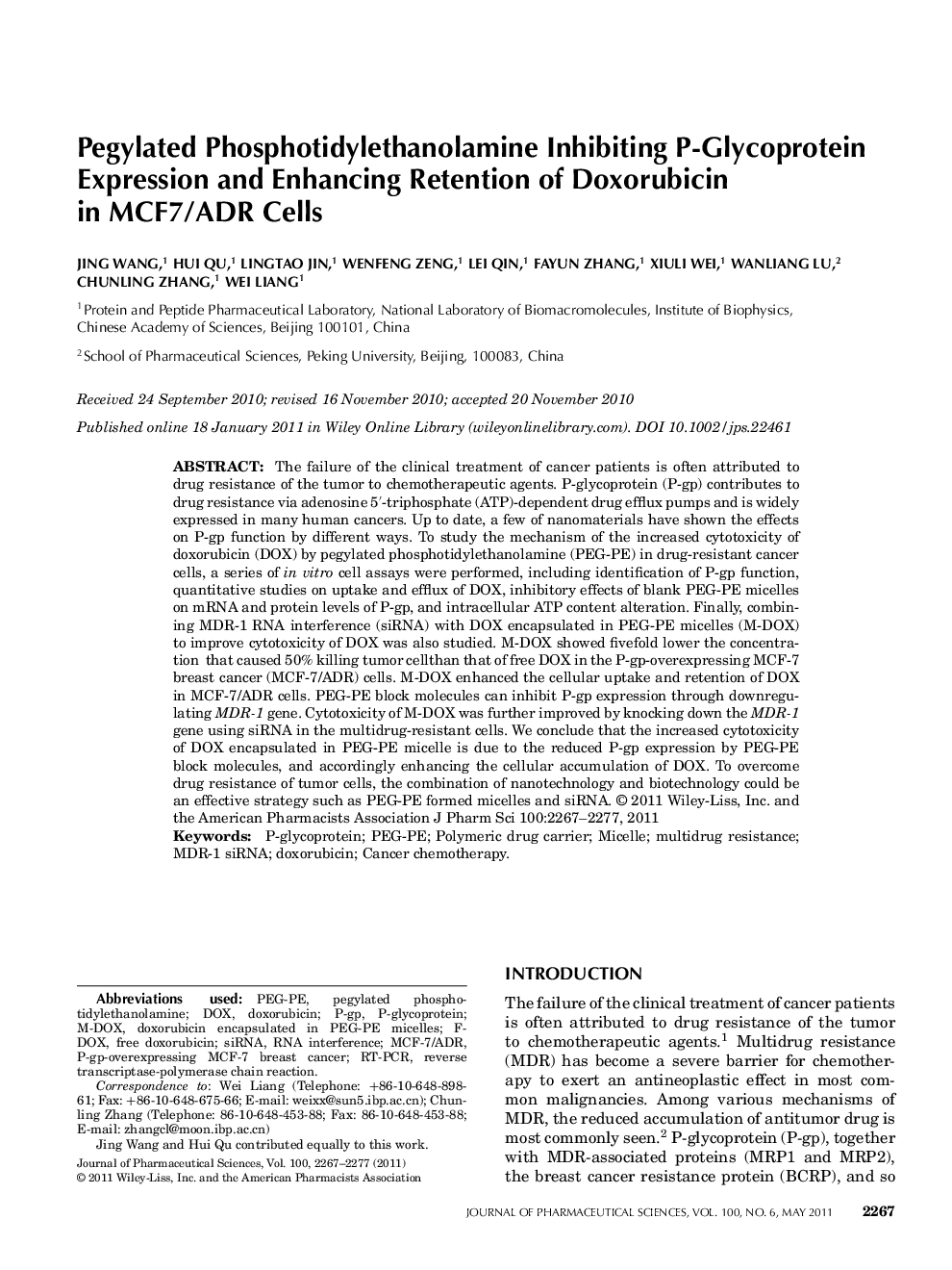| Article ID | Journal | Published Year | Pages | File Type |
|---|---|---|---|---|
| 2486434 | Journal of Pharmaceutical Sciences | 2011 | 11 Pages |
Abstract
The failure of the clinical treatment of cancer patients is often attributed to drug resistance of the tumor to chemotherapeutic agents. P-glycoprotein (P-gp) contributes to drug resistance via adenosine 5â²-triphosphate (ATP)-dependent drug efflux pumps and is widely expressed in many human cancers. Up to date, a few of nanomaterials have shown the effects on P-gp function by different ways. To study the mechanism of the increased cytotoxicity of doxorubicin (DOX) by pegylated phosphotidylethanolamine (PEG-PE) in drug-resistant cancer cells, a series of in vitro cell assays were performed, including identification of P-gp function, quantitative studies on uptake and efflux of DOX, inhibitory effects of blank PEG-PE micelles on mRNA and protein levels of P-gp, and intracellular ATP content alteration. Finally, combining MDR-1 RNA interference (siRNA) with DOX encapsulated in PEG-PE micelles (M-DOX) to improve cytotoxicity of DOX was also studied. M-DOX showed fivefold lower the concentration that caused 50% killing tumor cellthan that of free DOX in the P-gp-overexpressing MCF-7 breast cancer (MCF-7/ADR) cells. M-DOX enhanced the cellular uptake and retention of DOX in MCF-7/ADR cells. PEG-PE block molecules can inhibit P-gp expression through downregulating MDR-1 gene. Cytotoxicity of M-DOX was further improved by knocking down the MDR-1 gene using siRNA in the multidrug-resistant cells. We conclude that the increased cytotoxicity of DOX encapsulated in PEG-PE micelle is due to the reduced P-gp expression by PEG-PE block molecules, and accordingly enhancing the cellular accumulation of DOX. To overcome drug resistance of tumor cells, the combination of nanotechnology and biotechnology could be an effective strategy such as PEG-PE formed micelles and siRNA.
Related Topics
Health Sciences
Pharmacology, Toxicology and Pharmaceutical Science
Drug Discovery
Authors
Jing Wang, Hui Qu, Lingtao Jin, Wenfeng Zeng, Lei Qin, Fayun Zhang, Xiuli Wei, Wanliang Lu, Chunling Zhang, Wei Liang,
